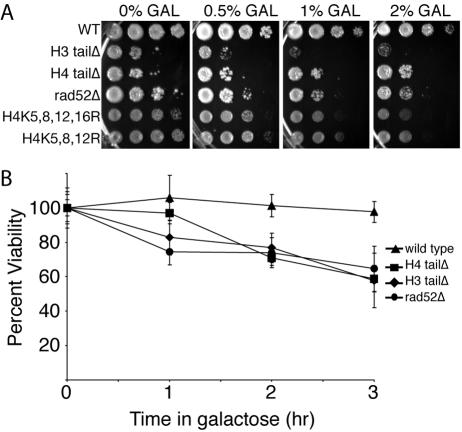FIG. 1.
The N-terminal tails of histones H3 and H4 and the acetylatable lysines of histone H4 confer resistance to the HO endonuclease. A. Sensitivity to prolonged exposure to HO endonuclease. S. cerevisiae strains RMY200 (wild type [WT]), RMY430 (H3 tailΔ), BAT039 (H4 tailΔ), FLY722 (H4K5,8,12,16R), FLY821 (H4K5,8,12R), and BAT038 (rad52Δ) containing the pGAL-HO-ADE2 plasmid were serially diluted onto plates containing increasing amounts of galactose (GAL) in order to induce increasing amounts of the HO endonuclease. B. Sensitivity to limited exposure to HO endonuclease. The viability of yeast strains used in panel A was determined after induction of the HO endonuclease for 0, 1, 2, or 3 h. The average viability ± standard deviation (error bar) of three independent ChIP experiments is shown. Viability at 0 h is normalized to 100 percent.

